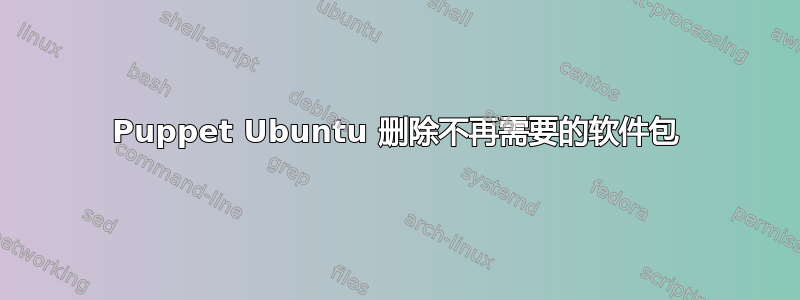
自学木偶。
使用 Ubuntu 11.10 Puppet 2.7.1(直接从 apt 下载)
在单个节点上运行一些测试脚本(如下http://docs.puppetlabs.com/learning/manifests.html)。
我制作了一个清单来安装并启动 apache2 包...一切都很好。
现在我想逆转这种情况,我制作了一个清单来清除 apache2 包。这成功完成了,问题是 puppet 只删除了 apache2 包,而不是 apache2 带来的所有包(我认为 apache2.2-bin 是主要的包)... 因此 apache2 服务仍然安装并在系统上运行。
如果我使用 apt-get 执行此操作,那么我只需执行“apt-get autoremove”,但我如何让 puppet 为我执行此操作?
答案1
不幸的是,没有好的办法可以用内置资源类型来实现这一点,只有两个不太好的选择。
“正确”的方法包括package为所有想要删除的包定义一个资源:
package { 'apache2.2-common':
ensure => purged,
}
package { 'apache2-utils':
ensure => purged,
}
# etc ...
而“不恰当”但更易于管理的方法是设置一个exec资源,以便在删除 apache2 包时运行依赖包的自动删除:
package { 'apache2':
ensure => purged,
}
exec { 'autoremove':
command => '/usr/bin/apt-get autoremove --purge -y',
# We don't want this running every time the puppet agent runs,
# so we'll set it to only run when the apache2 purge actually happens.
# Note that this would not run on your node that already has the
# apache2 package removed, since it won't trigger any more changes
# to the package.
refreshonly => true,
subscribe => Package['apache2'],
}
考虑到这两个选项,第二个选项肯定更有吸引力——尽可能坚持使用内置类型是件好事,但当你删除具有大量依赖项的包时,这并不切实际。
答案2
您可以拥有一个仅在删除 apache 包时运行的 exec 资源。
package { "apache2":
ensure => absent,
}
exec { "remove-apache-dependencies"
command => "apt-get -y autoremove",
subscribe => Package["apache2"],
refreshonly => true,
}


